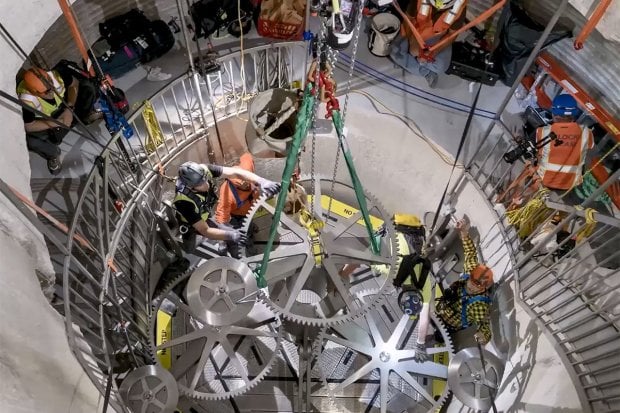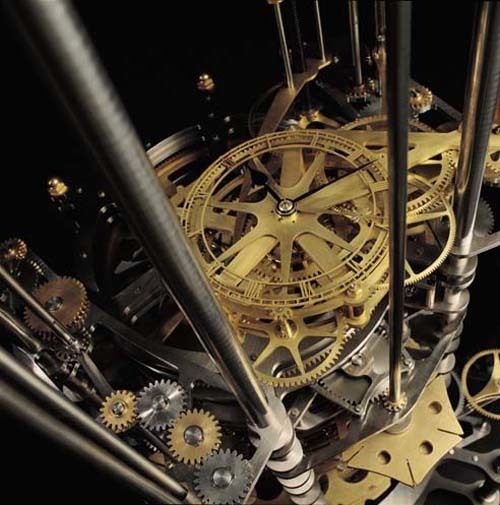
Future generations take note — deep inside the heart of a Sierra Diablo mountain, along the Texas-Mexico border, lies a 200-foot-tall, mechanical clock that ticks once a year, has a century hand that advances once every 100 years, and a cuckoo which will emerge once every 1000 years! Meet the 10,000 Year Clock!

The extraordinary timepiece is the brainchild of American inventor Danny Hillis, who first thought of the idea over 20 years ago in 1995. Since then, the engineer and his team have built several prototypes, including an 8-foot-tall version that helped usher in the year 2000, and is now on display at the London Science Museum.
However, it was not until 2011, when Amazon CEO Jeff Bezos agreed to fund the project’s $42 million cost that work on a full-scale version of the 10,000-year clock began in earnest. As you can imagine, designing a clock that can keep accurate time for such an extended period was no easy task. On February 20, 2018, Bezos announced that installation of the 500-foot-tall timepiece had finally begun.
Housed in a 500-foot-tall tunnel drilled inside a mountain owned by the billionaire, the clock will only be visible from the peak through a sapphire glass cupola that attaches it to the shaft. Made using durable, long-lasting materials like marine grade titanium, ceramic, and stone, the time machine will be driven by giant gears and powered by thermal energy harnessed from changes in the mountain’s day and night temperatures.
The timepiece’s bell will chime ten times a day, playing unique melodies that the inventors claim will never be repeated over the course of its 10,000-year lifespan. Unfortunately, given they will never emanate beyond the mountain’s walls, the countless musical scores will go unappreciated.

Five room-sized chambers carved inside the mountain will commemorate the clock’s one-year, ten-year, 100-year, 1000-year and 10,000-year anniversaries. At the end of the inaugural year, the first chamber will animate an 8-foot-tall model of the solar system. While Bezos and his team are seeking ideas to celebrate the clock’s ten-year anniversary, they will let future generations decide the best way to mark its 100-year, 1,000-year and 10,000-year birthdays.
However, the celebrations may never happen given that the remote mountain is far from any airport. Even if some brave souls do make it there, they will have to hike up a steep 1,500-foot hill to get to the double steel door entrance. They will then ascend in total darkness up a spiral stairway so steep, that it had to be constructed by a stone-slicing robot invented specifically for the job. Along the way, they will encounter massive stone disks the size of a car that act as counterweights to the clock’s drive system. Further up, will be the horizontal windlass that can be wound up manually to hear one of the clock’s thousands of unique chimes. However, thanks to its massive size, it will take two or three people to accomplish the task. Those who persevere all the way to the top will be handsomely rewarded with the clock’s 8-foot-wide face, which artistically depicts astronomical time with stars and planets.
Bezos says he hopes the clock will “change the way humanity thinks about time and encourage people to take a longer view of things.” The entrepreneur quips, “Over the lifetime of this clock, the United States won’t exist. Whole civilizations will rise and fall. New systems of government will be invented. You can’t imagine the world — no one can — that we’re trying to get this clock to pass through.”

It turns out Bezos is not the only one who thinks the 10,000 Year Clock is a brilliant way to connect us with future generations. Hillis expects to build many more and says his non-profit, The Long Now, has already garnered funding for a second one, which will be housed inside a mountain in eastern Nevada’s Great Basin National Park.
Resources: longnow.org. wired.com
